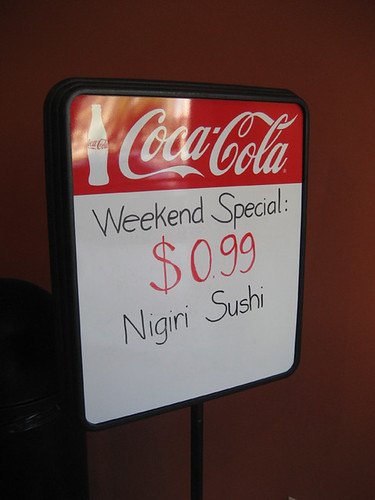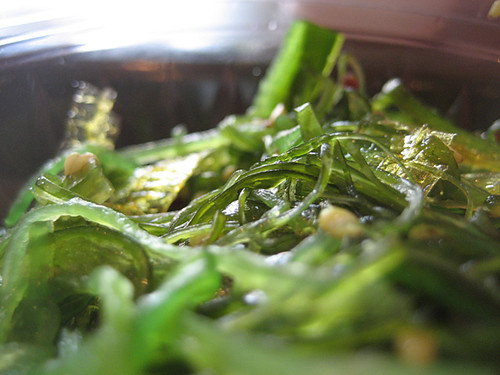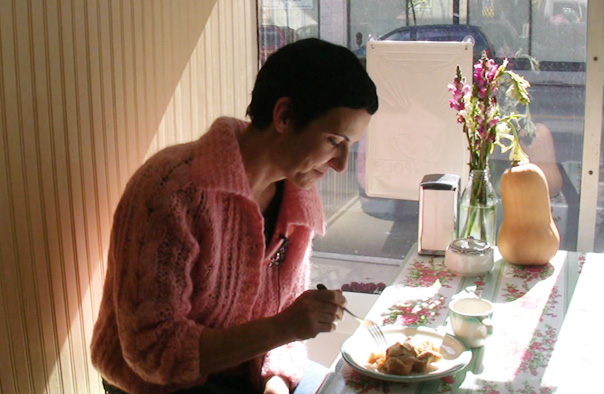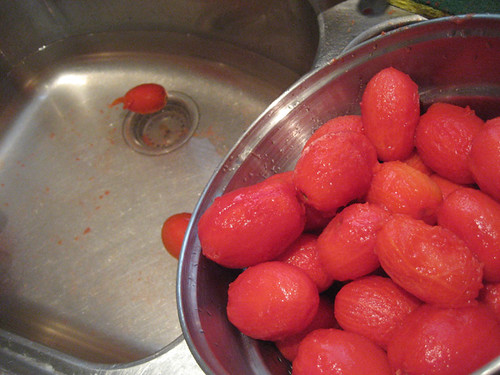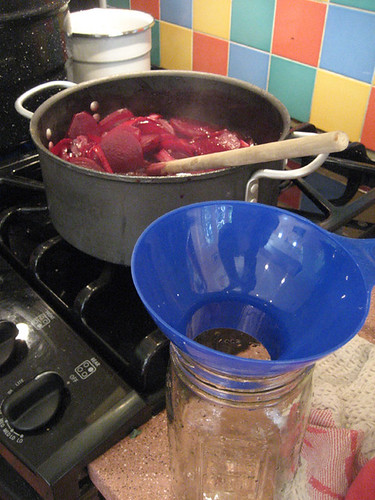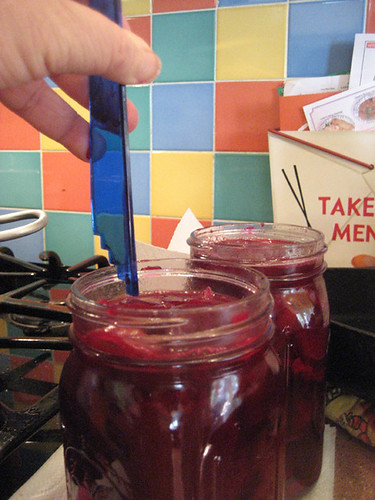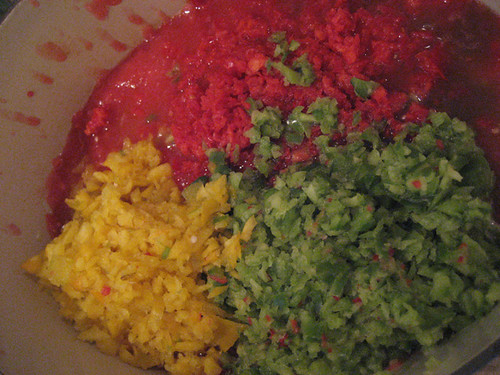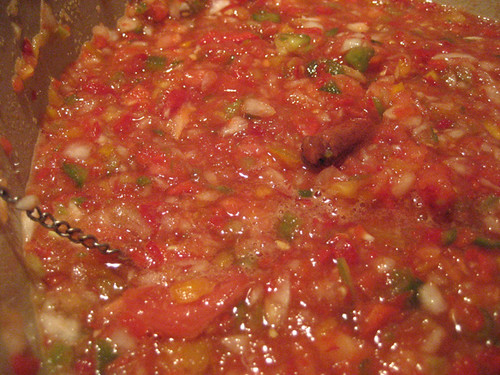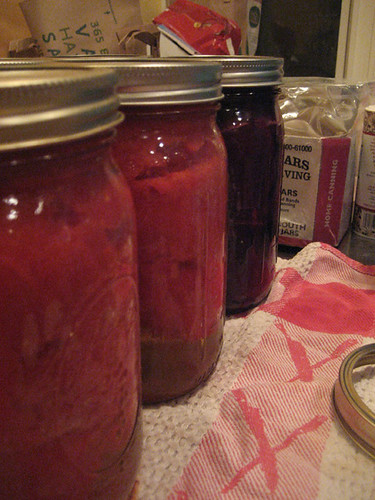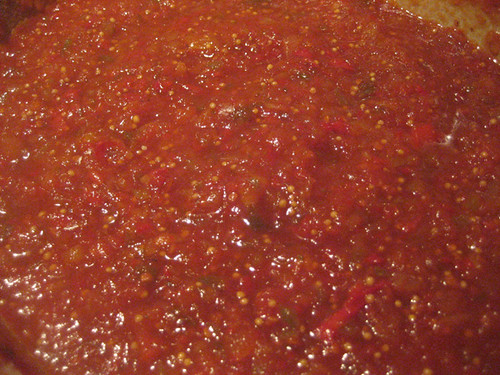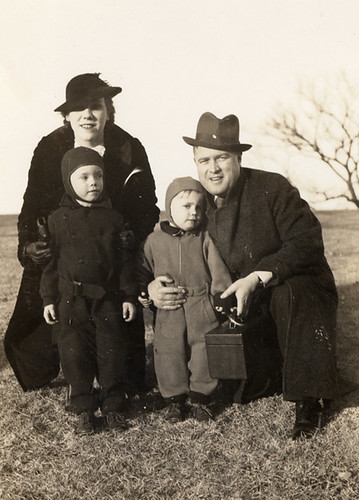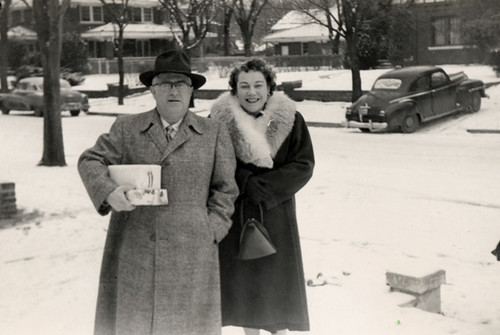I have a cold and I have a bunch of shooting to do and Hammond and I are giving a presentation at Mensa’s confab this Thursday on sustainable fish and I have to carve pumpkins with the kids and oh, it’s a busy week and I have no inspiration to write something. So if anyone does happen to visit this week, I’m going to dig way back in the archives to find something for you, here’s something I posted at Chowhound many years ago when my tall, self-assured 8-year-old was a mere baby traveling the city with his food-obsessed dad. This place is still around but I have never been back, sad to say.
Entering the Pharoah’s Chamber
Someone posted on Luxor a few weeks ago and that sent me out to explore further reaches of Lawrence where I evidently hadn’t been for a while– long enough to allow a new middle Eastern restaurant to pop up, at least.
In fact, it seems to have been long enough for an entire Egyptian enclave to have popped up in Albany Park; just driving along Lawrence I counted no less than three places bearing three of the most stereotypically Egyptian names possible– no, nothing named King Tut, but Luxor, Nefertiti Cafe and, simply enough, The Pharoah’s.
Entering The Pharoah’s takes you back to the days when all Chinese restaurants were named The Great Wall. Not only is the name stereotypical, but the room has been done in the style of a pharoah’s tomb (at least a pharoah whose preparations for the afterlife included a big screen TV), with off-the-shelf bas relief tiles of the most cliched Egyptian scenes. Ten years from now, it will be that taqueria that mystifies everyone with its Egyptian motifs.
So am I mocking The Pharoah’s? On the contrary. I am saluting the entrepreneurial spirit of the immigrant, who seeks to offer the customers of the new country exactly the stereotypical experience of the owners’ native land they expect. In fact, The Pharoah’s proved to be a totally welcoming and friendly environment that checked off every single one of my signs of an authentic immigrant restaurant experience (see below). How welcoming was it? Well, one of my party not only got to dance with one of the female proprietors, he wound up being kissed by her– and then being fed by her by hand! Of course, he’s 17 months old, so that might have had something to do with his special treatment.
Having the baby along gave me the excuse to order way too much food so I could try several things. The baba ghanouj (which I noticed they pronounced with an actual j sound, ganoodge, not ganoosh) had a good smokey flavor. The baby and I both liked it a lot. The beans in the foul likewise seemed to have been hand-roasted over a flame and bore visible grill marks; I missed the little hint of a liquory flavor (presumably not actually alcohol) that these have at Tut Oasis, but the freshness was inarguable and I certainly liked them better than Al-Khaimyeh’s (or whatever the place is on the opposite side of Kedzie from Noon-O-Kebab). We had no problem finishing most of that, too, both of us. The chicken schwarma sandwich was a disappointment only in that at the low price of $2.95, it was pretty thin and thus the chicken tended to be a little lost amid other things; I would have paid a dollar or two more for a fatter sandwich (like Tutunji’s), not that I strictly needed more today, anyway the chicken eaten by itself was very flavorful and moist, I might well order a dinner choice instead of a sandwich next time and see how that comes out. (Though the front of the menu was pretty much the usual stuff, there were some more unusual items on the back worth future exploration.)
Last but not least, I think The Pharoah’s might well be an interim step, at least, in Vital Info’s search for the perfect middle eastern place, since they brought us a plate of pickled peppers and such, and also a plate of extra tomato and cucumber, alongside our meal. (She also got a yogurt from the fridge and fed it to my son while bouncing along to the Egyptian music videos, but you can’t expect the same treatment.)
Oh, and they also have hookahs, like Luxor. Though at lunch time they seemed to be just cleaning them, at least they didn’t offer either me or the baby one.
* * *
Mike G’s Signs of An Authentic Immigrant Restaurant Experience
with The Pharoah’s score
1. Large screen TV showing native programming [Y]
2. Male proprietor walks through non-smoking area with lit cigarette [Y]
3. Male proprietor walks through entire restaurant talking on cell phone (can be combined with #2) [Y]
4. Female proprietor fails to understand item you are pronouncing (“fool… fowl… fole?”) until you point to it, at which time she says “Ah, fool!” pronouncing it exactly the way you thought you said it the first time [Y]
5. Multiple family members at work, more than would be needed if employing the whole family was not the point of restaurant [Y]
6. Presence of older man, not an owner but with undefined other role in the running of the restaurant, with extravagant mustache in style of the village they came from [Y]
7. Everyone in extended family/staff comes out to at some point to say hi to the baby (optional if no baby available) [Y]
Pharaohs Cafe
(773) 478-8400
Albany Park/North Park
3949 W Lawrence Ave
Chicago, IL 60625


 Posted in
Posted in 
